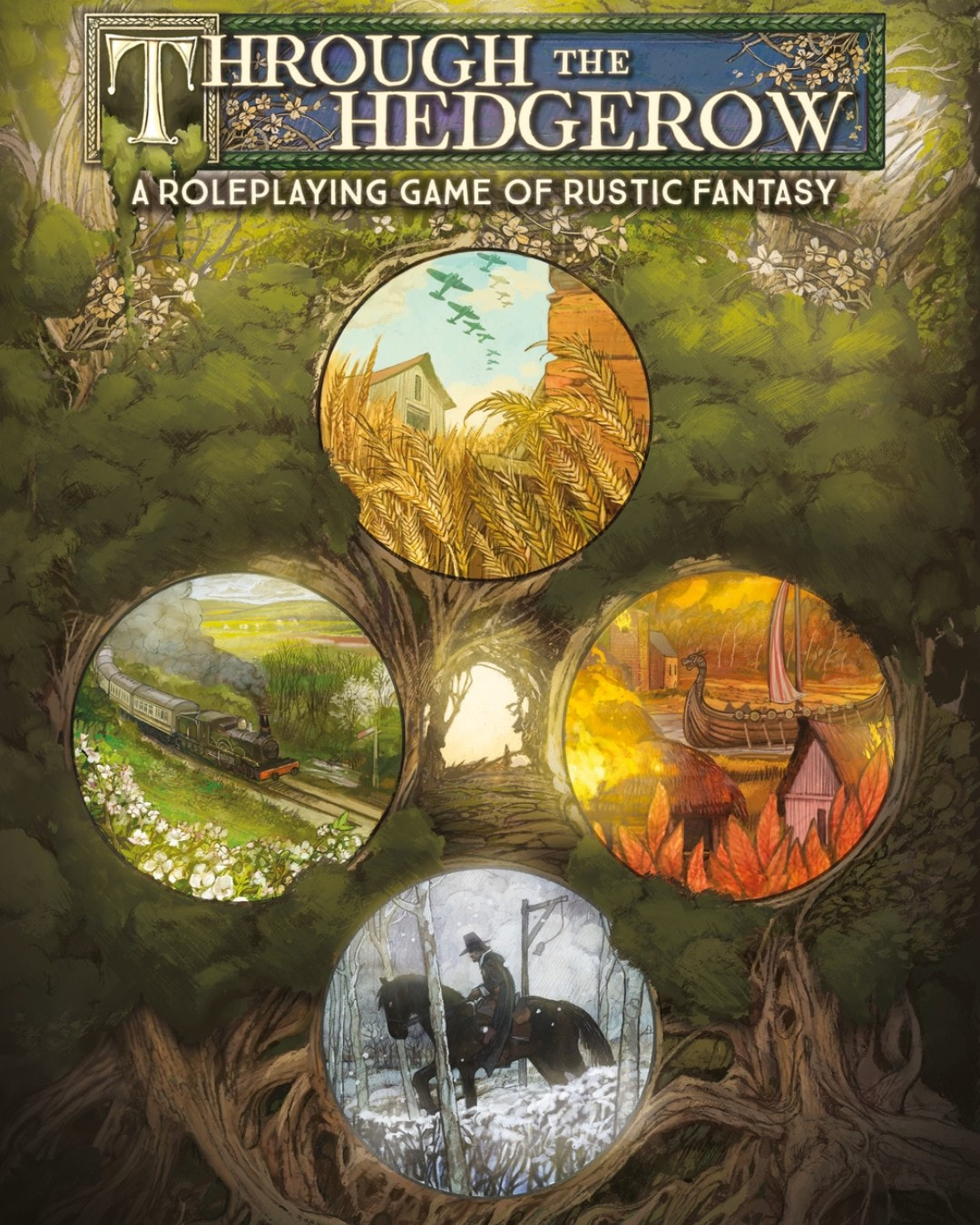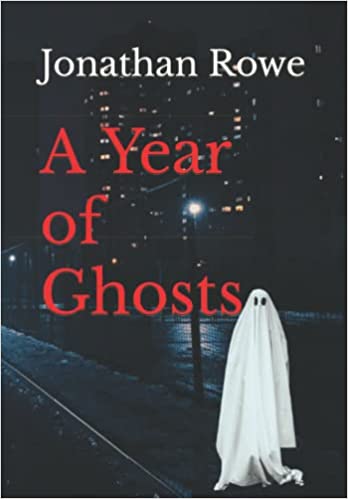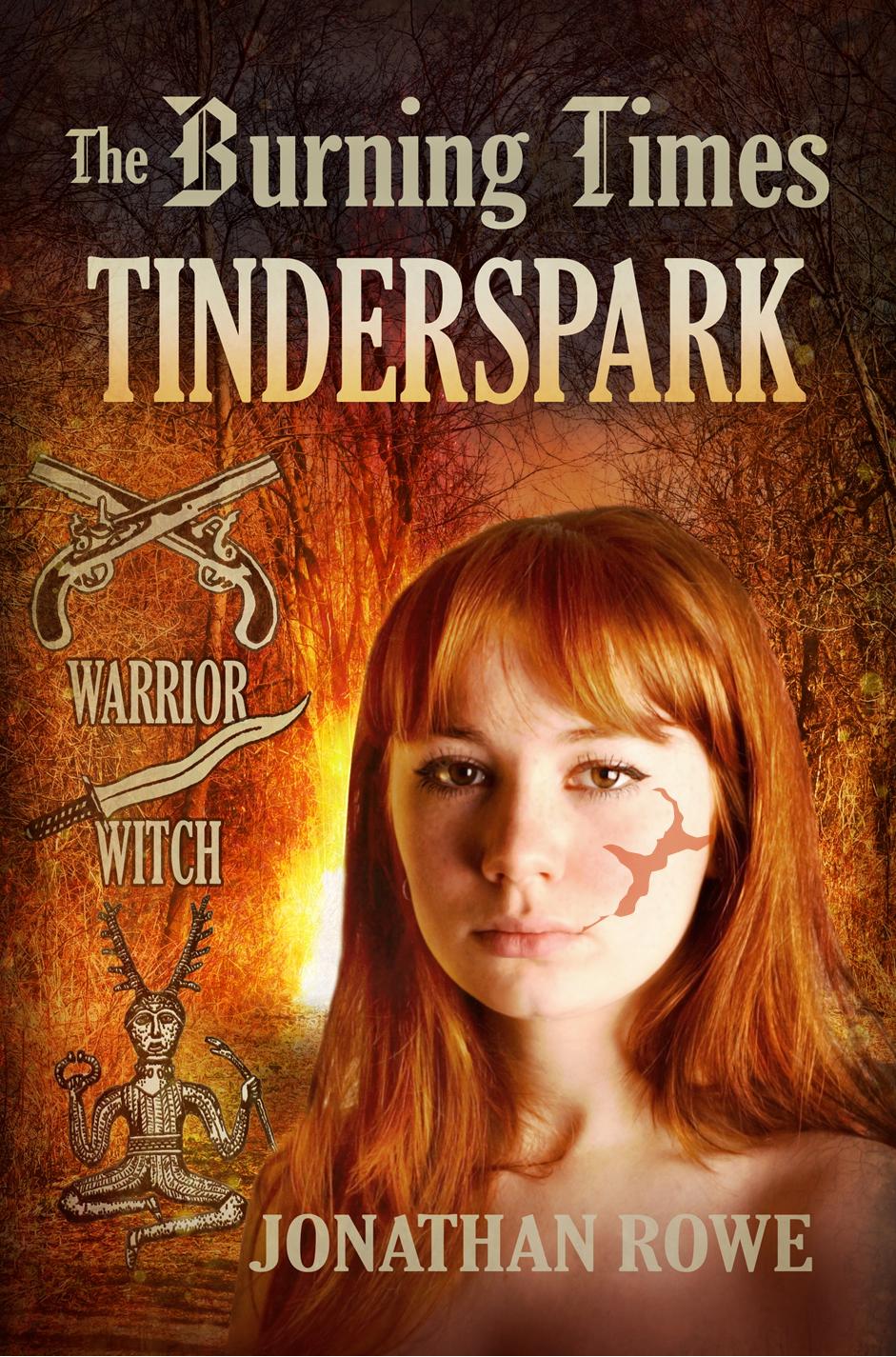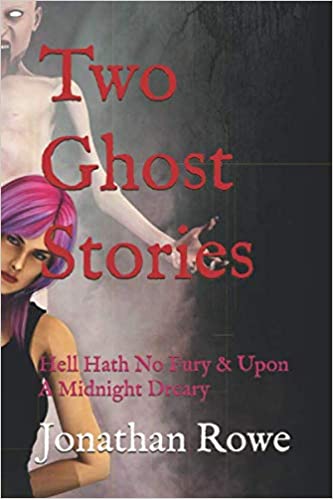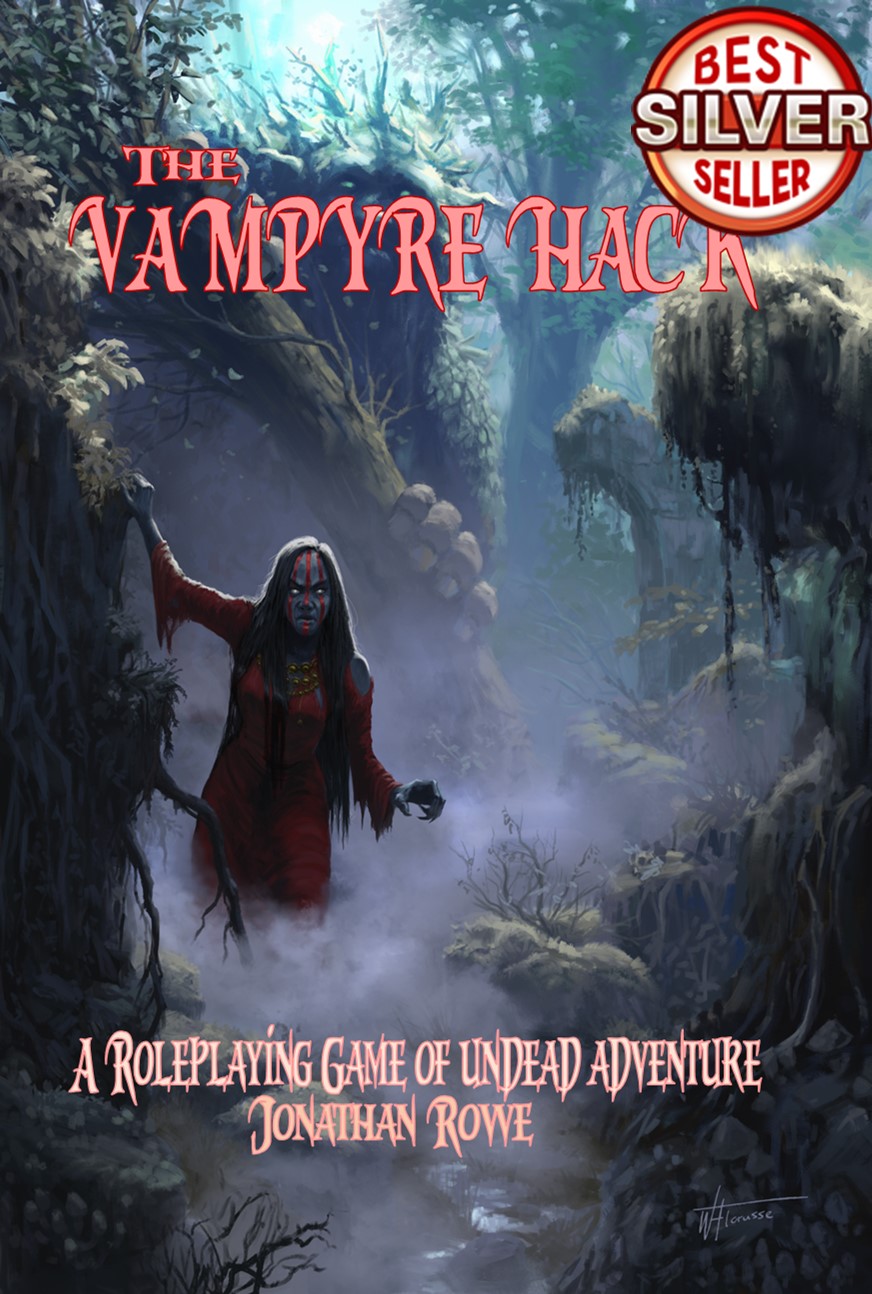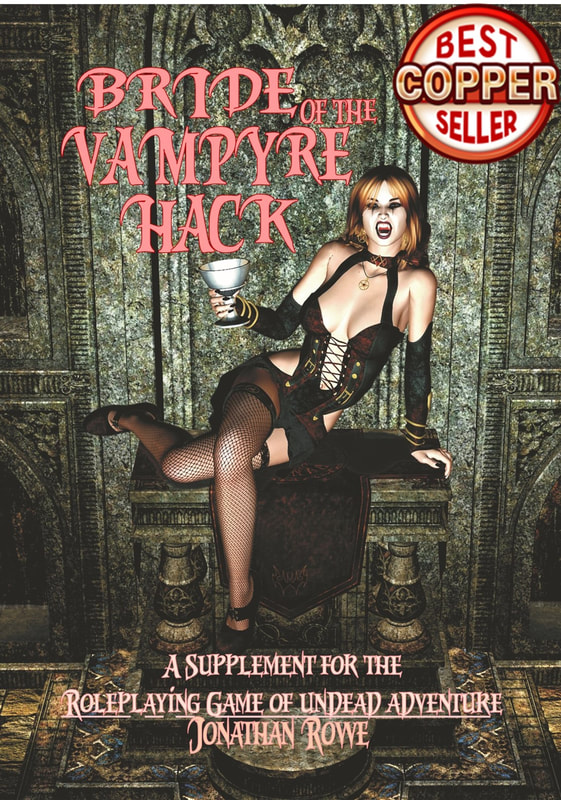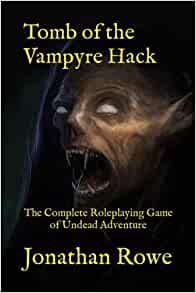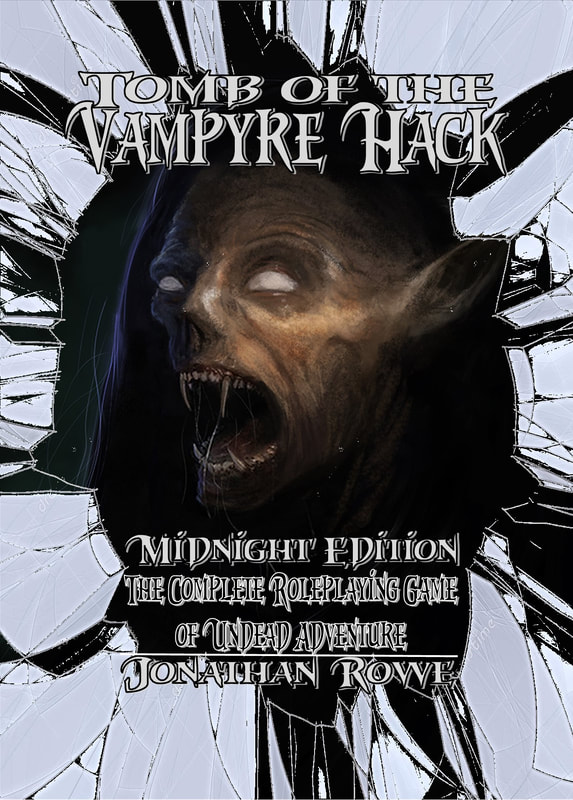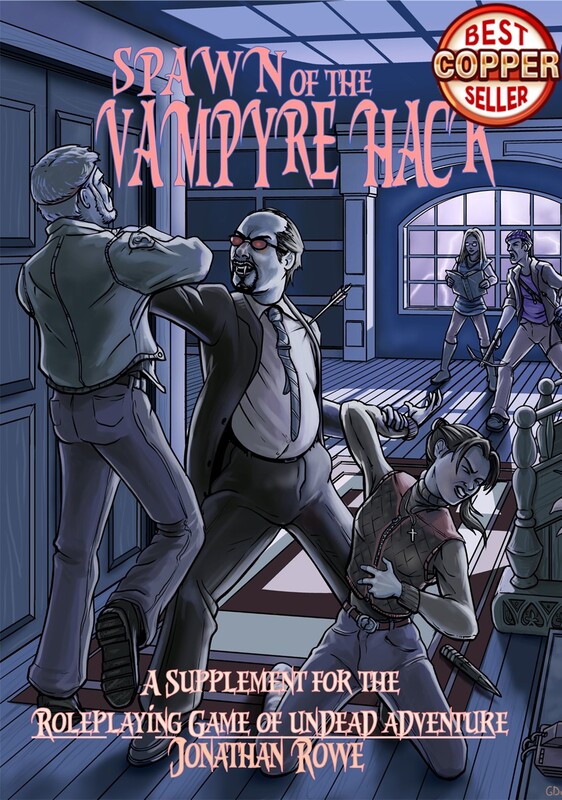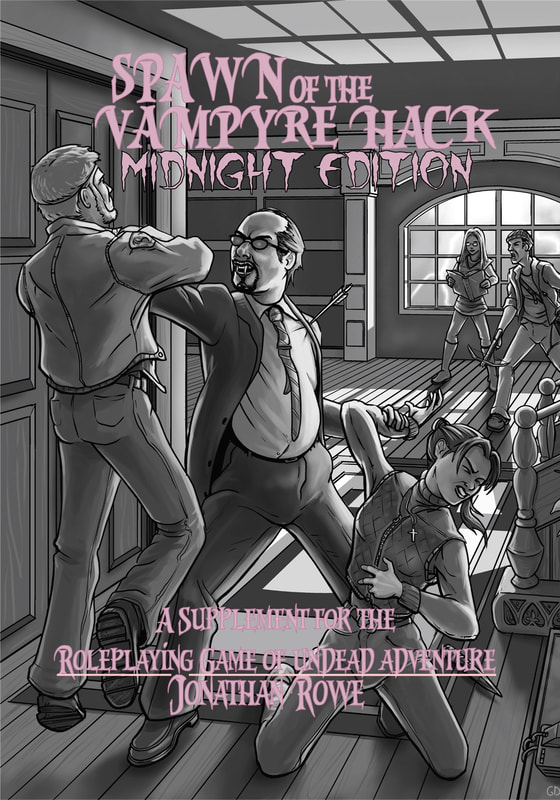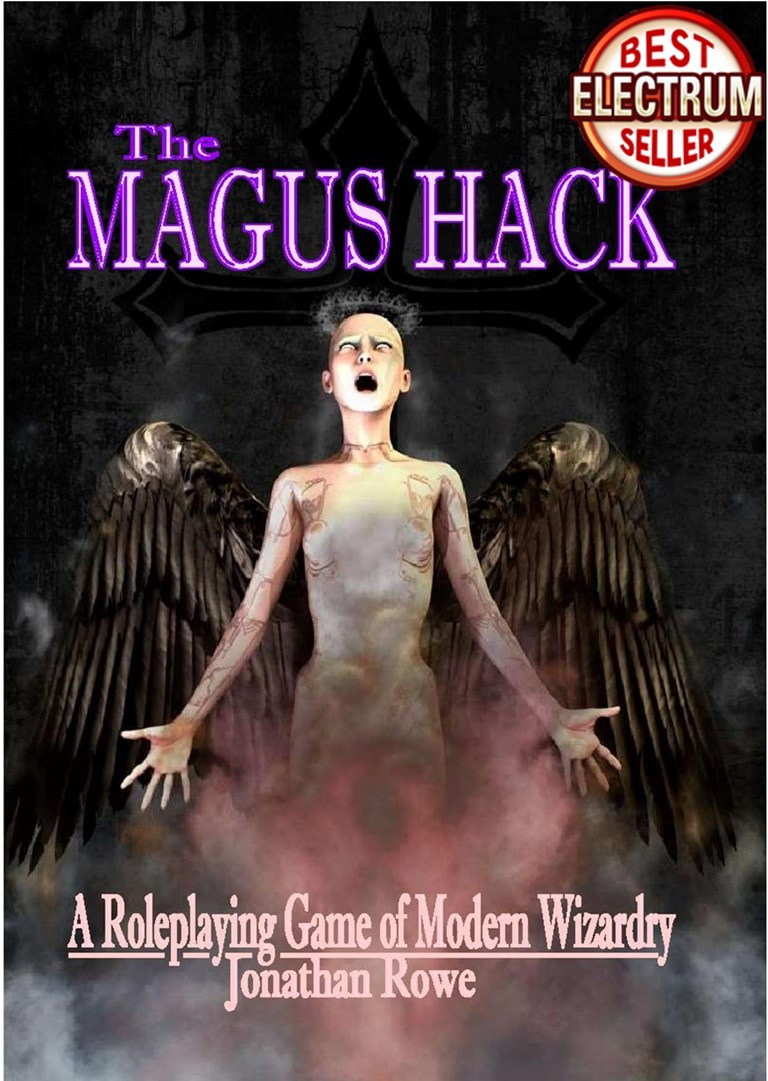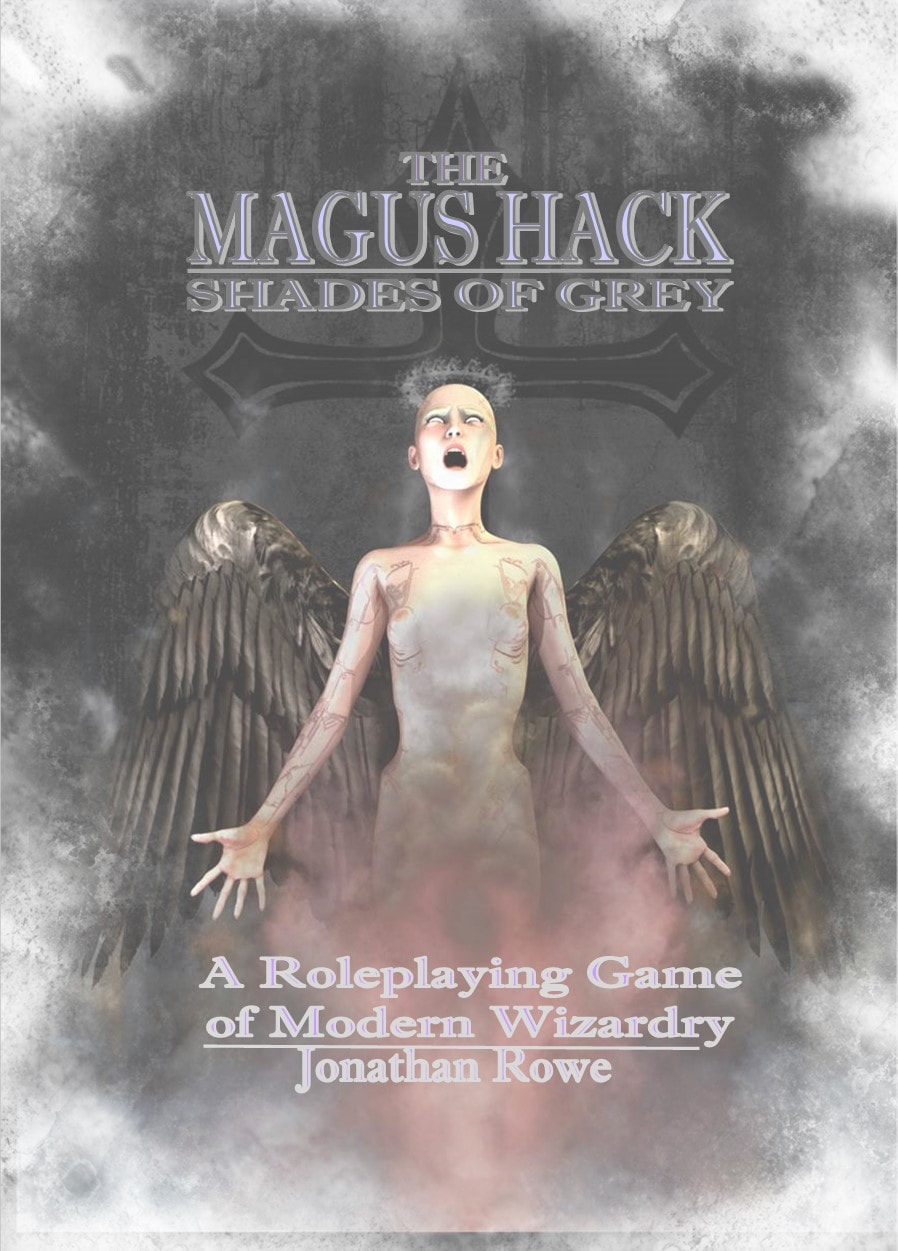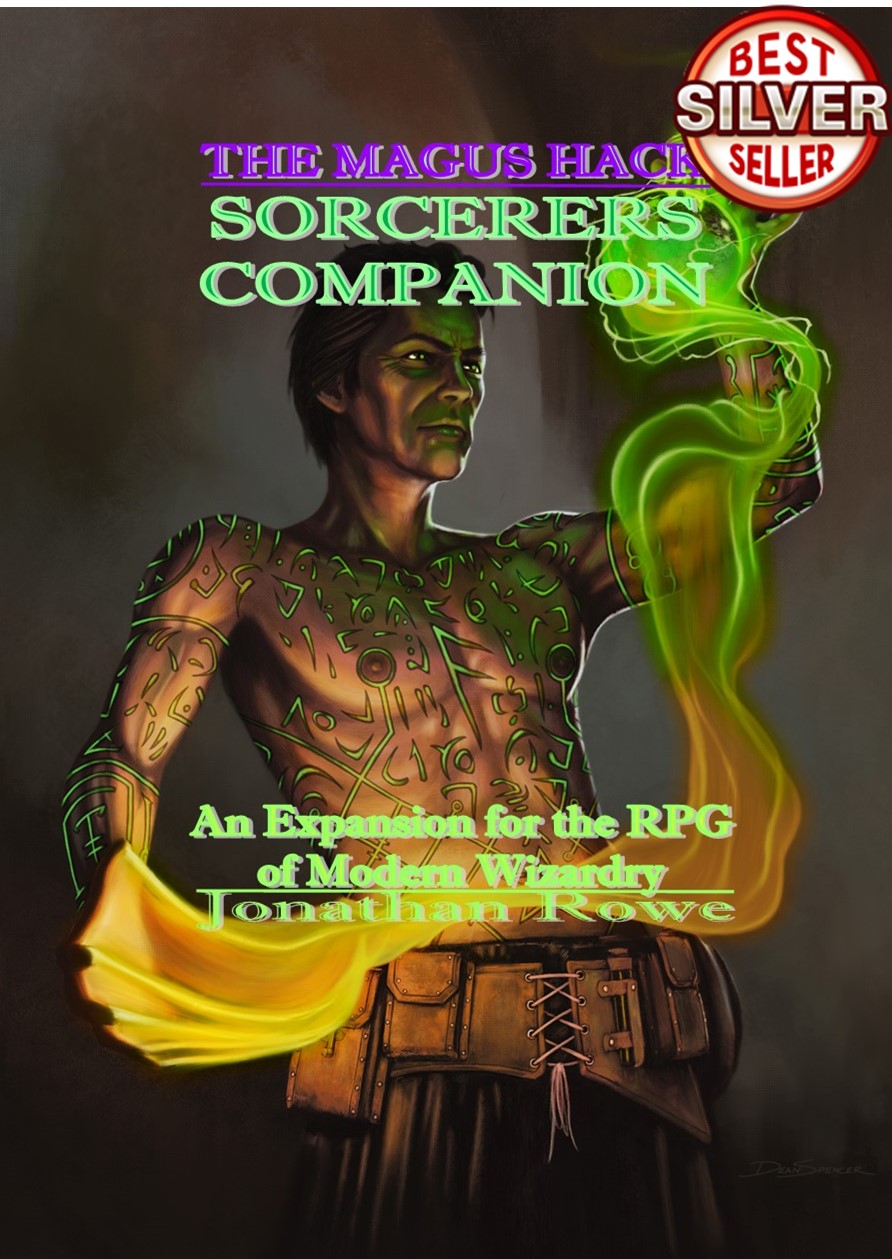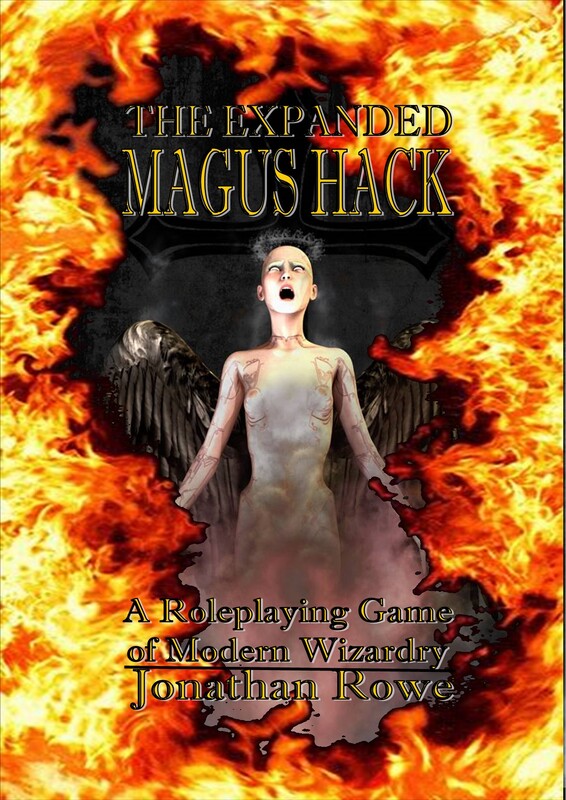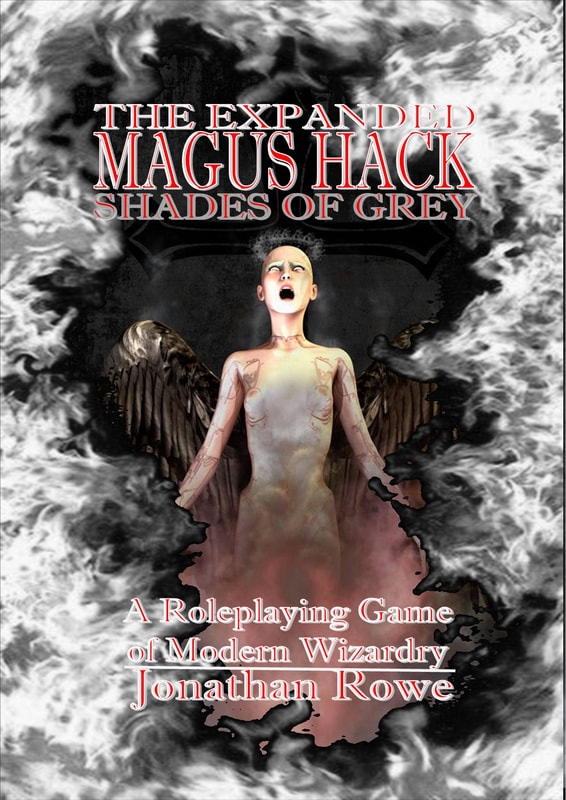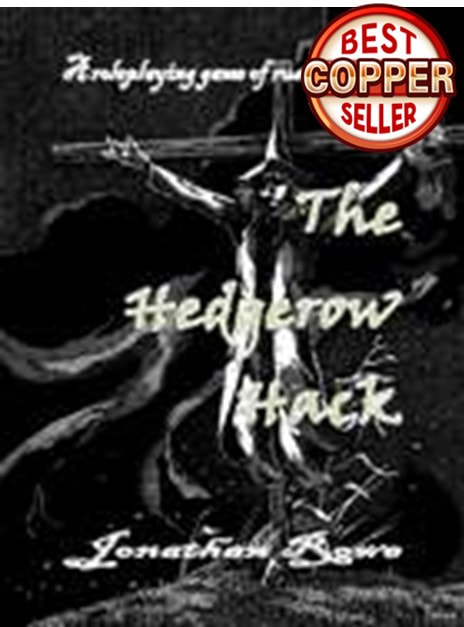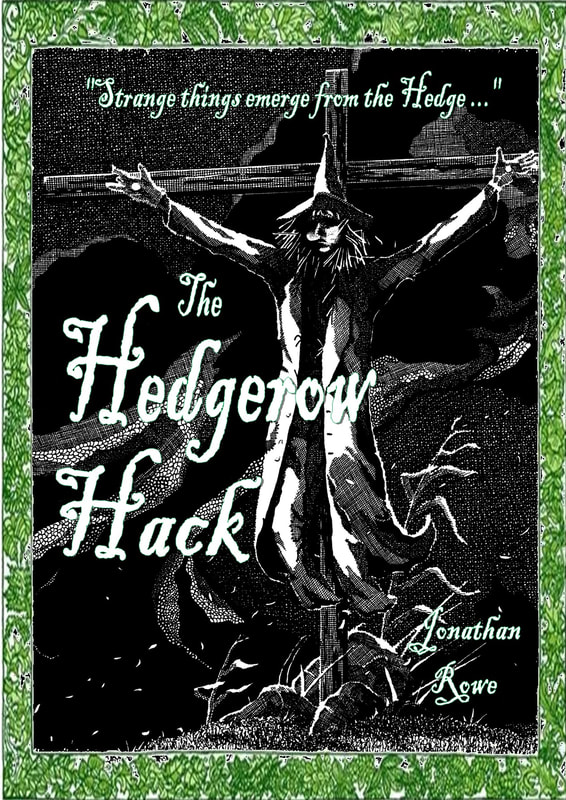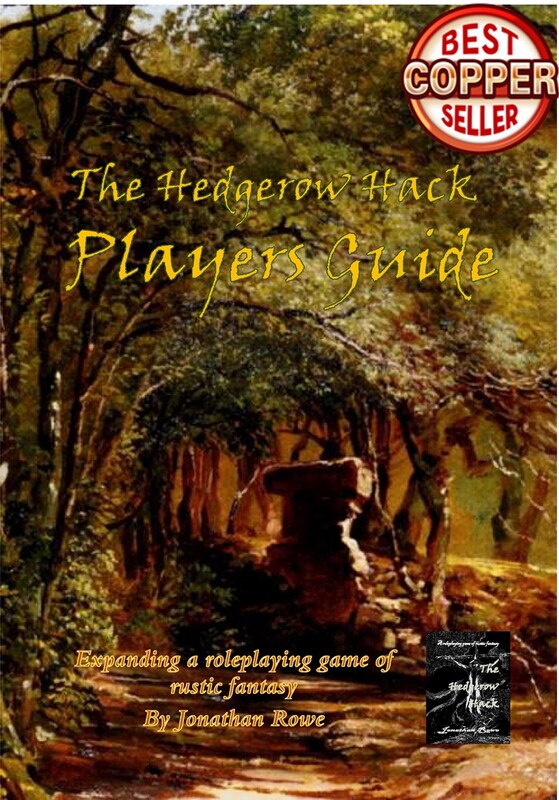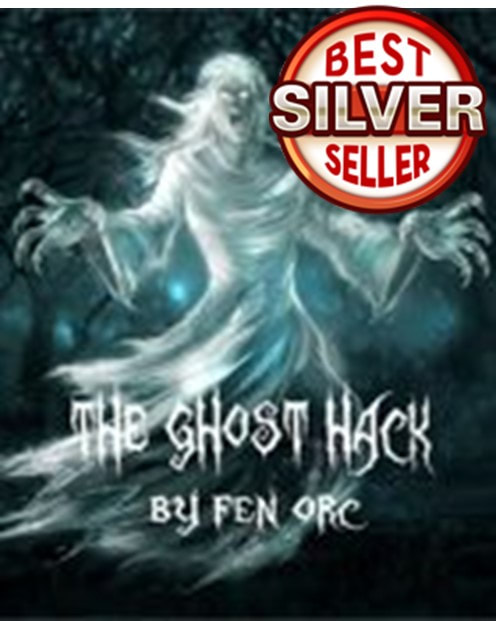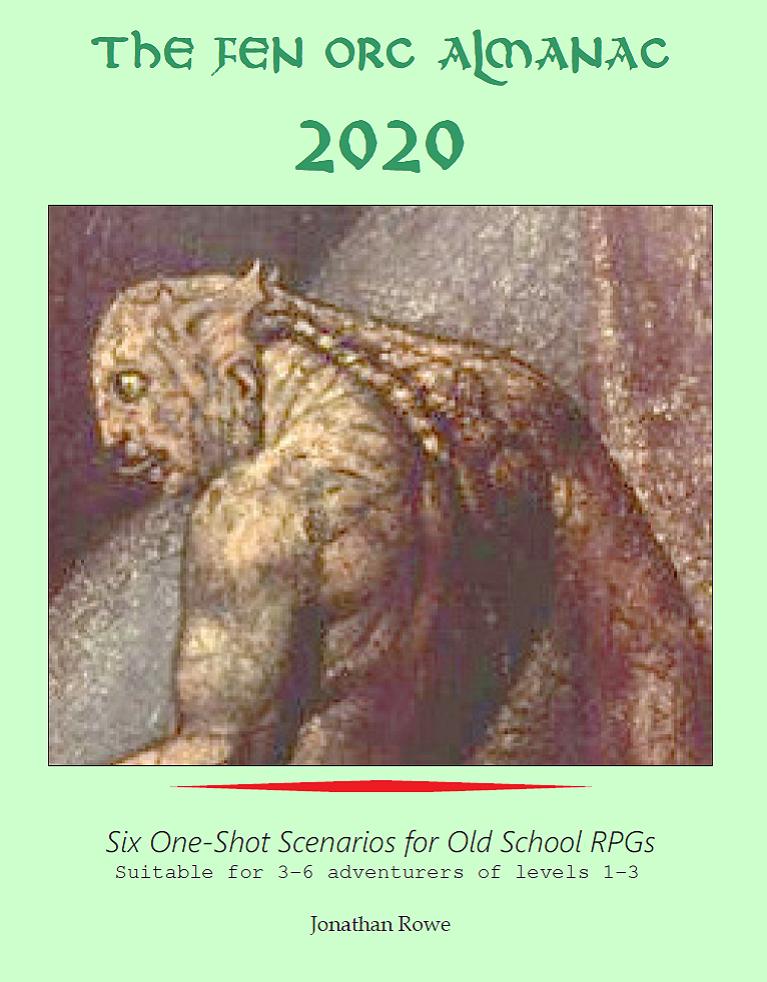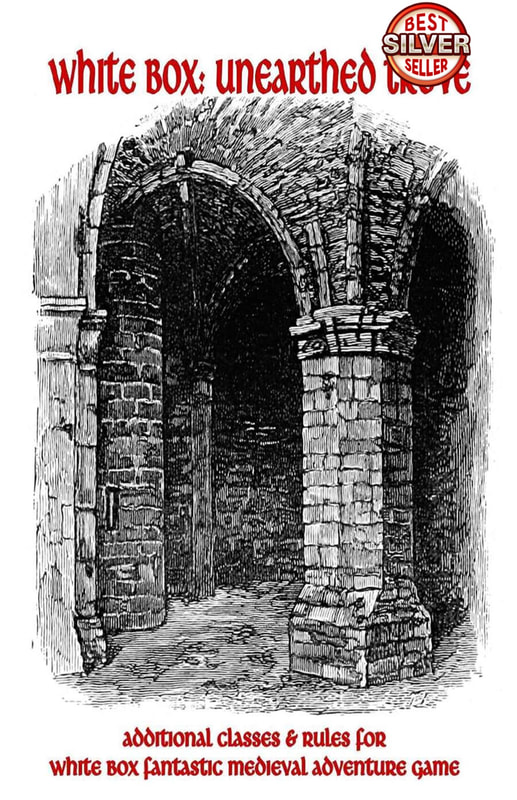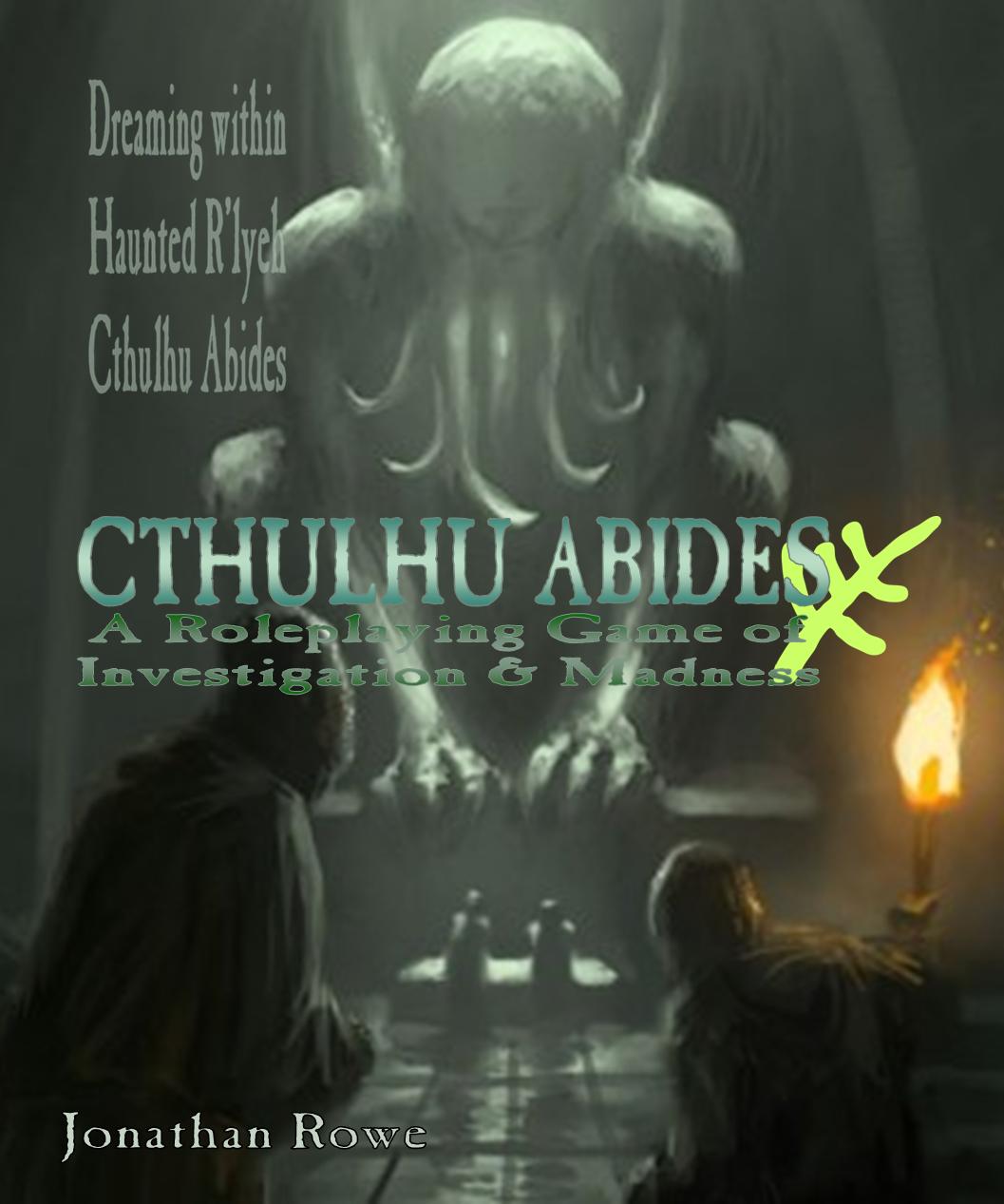|
She's on the way ... The expansion to the Vampyre Hack (with bangin' cover art by Robert G. Male) will feature 8 new undead Tribes and a bunch of other stuff to make OSR Vampyres fun again The Vampyre Hack has been an unexpected success so far - and see here for more information on modern vampires through the lens of a Hack-style Old School RPG. Ahead of this companion volume being released, I thought I'd share design notes on the new Tribes - especially as it's an opportunity to reminisce and critically reflect on the directions Vampire: the Masquerade took in the early 1990s. 1991: The Players GuideHot on the heels of the revolutionary Vampire: the Masquerade came the Players Guide. It was clearly more of a team project than Mark Rein-Hagen auteur-like approach to the core rules. Here were (excellent) essays by the likes of Stuart Wieck, David Greenburg, Andrew Greenberg and Sam Chupp. There were also four new 'independent' (i.e. non-Camarilla) Clans and a former Clan reduced to a Bloodline. And this is where the rot set in. Rein-Hagen's 'classic seven' vampire Clans were templates for a huge variety of character types. They were archetypes rather than stereotypes. The same could not be said of the new bunch - nor were their powers and weaknesses as well thought out. Assamites
Even if you were happy with the assassin stereotype, the signature Quietus Discipline felt undercooked: a one-note series of 'poisonous blood' abilities that weren't particularly powerful or versatile. Over the next decade, Assamites went through a huge number of alterations. Their blood curse was abolished. They were given magical spells. They were reinterpreted as pious Muslims. Consultants were employed to get the Arabic terminology right. They were renamed the Banu Haqim. Much less problematic, you'll agree, but (whisper it) kind of boring. The Banu Haqim have been reimagined as a nice Clan of Camarilla-friendly Muslims, with no villainous streaks and whose main weakness is that people tend to vilify them unjustly because of their stained auras. Great for representation but no longer fizzing with dramatic possibilities. Followers of Set
As with the Assamites, there have been repeated revisions trying to water down the implication that African vampires are just plain evil. These days they're known as 'the Ministry' and model themselves on slick televangelists, with the idea that Set is symbolic for the friends we screw over along the way. Never mind the implied racism, my real problem is that V:tM never needed a Clan devoted to philosophical evil. The whole point of Rein-Hagen's original premise was that being a vampire was in itself enough to produce monsters: the Beast inside, the cannibalistic social structure, the enslaving Blood Bond, the paranoia of Elders, the frustration of the Neonates, the corrosive effect of the passing centuries on conscience and empathy. There's no shortage of reasons why a group of vampires might be The Bad Guys without having to make them worship a God of Evil. Giovanni The Giovanni are necromancers who all belong to the same Mafia-like Italian family. Giovanni got a lot of development, with a series of published scenarios exploring how a Renaissance cabal of Venetian necromancers cannibalised an Antediluvian to acquire Clan status. Plus, their ghost-wrangling powers tied in with the forthcoming Wraith: the Oblivion product line. All of which is great, except for two things. Having to be some sort of Italian mobster was a bit limiting for Player Character concepts. And the idea of late Medieval wizards cannibalising a snoozing Antediluvian to steal immortality had already been done with the Tremere. The overlap became even more pronounced when the Necromancy Discipline was replaced with a collection of magical Paths and rituals, very much along the Tremere template. Since then, the Giovanni have been reinterpreted as the Hecata, a sort of umbrella Clan of necromancer-vampires, with the cannibal Giovanni just one branch. Definitely better for player choice and diversity, but even more lacking in real distinctiveness. Ravnos
To be fair, I quite enjoyed the directions they took Ravnos in and, unlike the Assamites, they never made them boring. But when White Wolf started their apocalyptic 'Gehenna' storyline in the late '90s and one Clan was slated to be destroyed, it came as no surprise that it was the under-loved Ravnos. Yes, during the 'Week of Nightmares' the entire Clan turned on each other in a cannibalistic orgy then their newly-awakened Antediluvian got nuked. Subsequent editions of V:tM were able to approach the Clan with a clean slate. That's a hell of a way to 'Year Zero' a problematic concept. Salubri
Not much else about the Salubri makes sense. It's ironic that, like the other Players Guide Clans, they're not really suitable for Players. They're Plot Hook NPCs in peril, to be protected or hunted by the PCs. The idea that the Tremere could exterminate the entire Clan and turn all the other vampires against the survivors strains belief. Sure, maybe inside the Camarilla this prejudice against Salubri would become normative - after all, recognising the Tremere as a legitimate Clan sort of implies de-legitimising the Salubri as heirs to the original Clan founder. But outside the Camarilla (i.e. throughout most of the world) there's no reason the Tremere's writ should run. Why wouldn't the Assamites, who hate the Tremere, make a point of sheltering Salubri? The developers tried to fix this by taking the Salubri in different directions: creating a martial kick-ass variant, making their blood so tasty that other vampires can't resist cannibalising them, making their bleeding Third Eye a perpetual threat to Masquerade, all sorts of muddled things. The consensus view remains that they're only good as NPCs. New Tribes, Vampyre-styleThe Vampyre Hack introduced les Tribus Éternelles – seven Tribes including the hideous Karnsteins, lordly Sangrali and hedonistic Messalines, all very much drawn from Rein-Hagen's archetypal clans but re-orientated for a simple D&D-inspired system of 6 Stats, character classes, levels, hit points and David Black's ingenious exhausting usage dice. For Bride of the Vampyre Hack I made a decision that all the Tribes would be global affairs, not regional powerbases or ethnic enclaves. The new Tribes are not defined by race or religion. I’ve called four new Tribes les Tribus Dévouées, which means ‘the Dedicated Tribes.’ This is because they are all locked into some sort of relationship with the Blood God they believe to be their founder, as opposed to the Tribus Éternelles who believe they are independent of the Blood Gods and look instead to their Elders and Voivods for authority. The Juddin The name is a Persian Zoroastrian term for an infidel. These are my rebranded Assamites and I want to link them historically to Persia – specifically ancient, pre-Islamic Persia - but the Tribe is now global and not linked to any particular Middle Eastern religion. The Juddin believe they are serving their Blood God and his strict code that all vampyres should live peacefully together and separately from humans. They see themselves as the police of the undead world. Since a lot of their laws are rather subjective in interpretation, they rely on oracles to reveal their Blood God’s wishes. PC Juddin start each adventure with a randomly rolled mission - they have to watch out for a vampyre (or any supernatural creature) doing a particular forbidden thing, like abusing humans' freewill or ruling over mortals openly or disrespecting the Elders. Then they have to work out what to do about it - and if they're too lax, they will be targeted in their turn by a Juddin hit squad. Juddin as a character class get magical silence for free - and a dramatic version that makes them utterly inaudible at all times unless they choose otherwise, including detection by motion sensors or microphones. Their poisonous blood gets more toxic as they go up in levels. The Jakhalos Jakhalò is a Romani term for the 'evil eye' but these vampyres aren't Romani. They're a Tribe whose Blood Goddess was an explorer of the Otherworld but came back changed - perhaps possessed or replaced by a doppelganger. She's been hunting her creations down and exterminating them, so the Jakhalos are a Tribe on the run from an all-powerful enemy they call Dya Milo ('Mother Vampyre'). Around the time of the fall of Rome, the last remnants of the Jakhalos hid themselves among a nomadic people making their way across Asia. At around this time, Dya Milo's relentless assaults stopped. The Tribe enjoyed a thousand years of safety, known as the Disrobireja ('the Liberation'). The Jakhalos felt a debt towards the Romani people who had (unwittingly) sheltered them - a feeling not widely reciprocated. Jakhalos are not Romani, but they are wanderers and fugitives who must change their Lair regularly or risk being exterminated. On the positive side, they can create illusions that increase n scale as they go up levels. The Lamias Lamia was a monster from Greek mythology that was located in Libya - the Greek term for Africa generally. Their Blood Goddess promotes a radical philosophy that humans and vampyres are both part of the natural order and ought to be partners. She broke with the other Tribes at the start of human civilisation. Her Tribe uses use the term 'the Ziggurat' to refer to the whole corrupt structure of urban living, with its oppressive hierarchies and predator-prey relationships. They want to tear it down but not because they love anarchy or misery but because they want humans and vampyres to be happy and fulfilled. In the 21st century, they're allies of degrowth, rewilding, population reduction and other Green concerns but also work towards making cities as unbearable as possible. Lamias can perceive weakness in any structure, social group or person and exploit it ruthlessly. They also turn into snakes and their snaky powers increase as they go up in levels. The Stregas These are the undead necromancers but with a new twist. Their Blood God now exists in the Underworld of ghosts and wants his Tribe to join him there. Special humans who die and return to life again come back with the Sigil of Strega on them visible only to Strega vampyres. When a marked mortal dies, they rise from the grave as a vampyre. Stregas seek out the bearers of these marks to hasten their second demise (ideally with but alternatively without the mortal's consent) and induct them into the Tribe. This unusual way of growing their populations makes up for Stregas having 'dead blood' that cannot create vampyres or Familiars or Sanguine Fetters. Their other compensation is their own Streghani Blood Magic which uses ghosts to accomplish the things they cannot. The Ariochites Arioch is a mysterious Old Testament king, but also the name of a demon and a Chaos God in Michael Moorcock's 'Elric' novels. The Ariochites are the hated healers with the mystical Third Eye. But here's the novelty. The Ariochites really do feed on souls and if they want to perform their miraculous healing they need to consume an entire soul. They can use this soul-energy to raise the dead - and that includes curing a vampyre. You can imagine how threatening this makes them to Elder vampyres with lots of enemies who absolutely do not want to be turned back into a helpless human. Likewise, their ability to break the Sanguine Fetter undermines the power structures vampyres enjoy or endure. Best to exterminate them on sight and by calling them 'soul sucking monsters' you are not even lying. Ariochites are one of les Tribus Perfides (the treacherous tribes) along with the demonist Molechim, of which more later. Next blog will look at the Sabbat Clans and the demon-worshipping Baali, both from 1992
0 Comments
In the last blog I wrote about my nostalgia for the 1990s iteration of Vampire: the Masquerade and how I was experimenting with using Matthew Skail's The Blood Hack to replicate V:tM's setting without its handfuls of d10s and burdensome lore. Then one thing led to another, as it does, and before I knew it, I seemed to have penned a new Hack-inspired RPG trans-cloning V:tM as an OSR project. Hello, The Vampyre Hack. Ducks in a row! Click images for links to drivethrurpg editions. Vampyre Hack cover art by Wouter Florusse. I've written a lot (like here and here) about my admiration for Matthew Skail's Blood Hack, so I had to think carefully about adapting it into a Hack of my own. Firstly, I don't want to cut into the chap's revenues or appropriate his ideas as my own. His innovation of the Morality Usage Die that gets bigger as it exhausts, meaning it grows quickly while it's a feeble little d6 or d8 but slows down as it turns into a monstrous d12 or d20 - that's just genius. His system for Blood Magic is very elegant and treating Blood as a usage die rather than a point pool, well that's inspired too. One point of view would be, given my love for the game and, in the words of Cogsworth: On the other hand, there are things Blood Hack is crying out for. Matthew Skail's game takes clear inspiration from V:tM but heads off in a different direction. It's not about angst and politics, it's about kicking supernatural ass in the middle of the night. There are only four clans and they are broad templates rather than factions or institutions. The setting imagines loose cabals of vampires scrapping with other denizens of the shadows rather than city-wide conspiracies. There are lots of typos and some of the rules Matthew has himself imported from other Hack rpgs are rather undigested. But the main reason is that I want to run a '90s-style Vampire campaign, but using a rules set inspired by the Blood Hack. So I want the classic array of Clans - ugly Nosferatu, aesthetic Toreador, lunatic Malkavians, wizardly Tremere, etc. - and I want Princes and Masquerade and Ghouls and Diablerie. This project started off as a Blood Hack expansion or supplement - just a few pages, really, saying "Here';s how you could port V:tM Clans into the Blood Hack." But once I started doing that all sorts of implications emerged and I found myself constructing something more like a brand new game. Let me take you through it ... Cloning or Contrasting? The first Hack RPG I designed was a root-and-branch rethink of Wraith: the Oblivion, one of White Wolf's horror RPGs from the same stable as Vampire: the Masquerade. I never made my peace with Wraith, so the Ghost Hack was an opportunity to do Wraith as (I felt) it should have been done. Shameless plugs. Among the new directions Ghost Hack took was making Wraiths vulnerable to iron and salt and I designed a scenario, Upon A Midnight Dreary, in which a team of ghost hunters secure a haunted house with strips of salt-encrusted tape along the walls and iron chains on doors. PC Ghosts find it difficult to move around unless they can influence the living to disrupt these barriers. Matthew Skail similarly departs from the White Wolf playbook in Blood Hack: his vampires cast no reflections and don't even register on film, photographs or over telephone communication - rather like the wonderfully elusive vampires in the intense '90s UK TV series Ultraviolet. Seriously, watch it. And yes, that's Idris Elba. Likewise, Skail's vampires are vulnerable to silver and holy symbols generally - the more so as their Morality Usage Die gets larger. Meanwhile, vampiric 'Disciplines' get dropped and, other than the starting build mandated by your Clan/Class, your vampire can be designed with any powers you want. Following this logic, I could have taken the Vampyre Hack down the same path, breaking away from the World of Darkness tropes and exploring vampires from a wider folkloric perspective. But on this occasion, I was more interested in creating an OSR analogue for Vampire: the Masquerade - in effect, a way of playing 90s-style V:tM with d20s, classic 6 stats and character classes. Like I said, it's a retro-trans-clone. What's in a Name? Mark Rein-Hagen, the creator of Vampire: the Masquerade, has many talents, but not the least is his flair for evocative naming conventions. His undead secret society is the Camarilla (meaning a political clique, but with connotations of medieval Spanish cloisters) and vampiric cannibalism is Diablerie (a French word for mischief with heavy hints of Satanism). The vampire Clans Brujah (inspired by the Spanish for 'witch'), Gangrel (a Scots word for a vagrant) and Nosferatu (German for vampire) along with the fear-frenzy of Rötschreck (complete with unnecessary 'metal umlaut') show off his linguistic range, while the vampire ancients are Antediluvians and Methuselahs, highlighting Biblical erudition. A clone RPG is going to feature 7 vampire lineages analogous to Rein-Hagen's Clans, vampiric cannibalism and an undead secret society. New names are important. No one wants "Generic Vampire Wizards" and "Arty Vampire Socialite Types." In Vampyre Hack, there are 7 Tribes or 'les Tribus Éternelles,' so the best name for their ruling coalition is the Heptarchy - a delightful Greek word more commonly used to describe the 7 Anglo-Saxon kingdoms of Dark Ages Britain. Sticking with Greek, vampiric cannibalism is Necrophagy, which is both horribly on-the-nose and slightly Shakespearean for 'eaters of the dead.' Chorazin is a town cursed by Jesus in Matthew 11: 20-24. It's also referenced in M.R. James' unsettling vampire story Count Magnus (1904) where the Devil-worshipping Count makes a pilgrimage to the accursed town. It seems a fine name for a cabal of medieval wizards who have turned themselves into vampires, hence La Tribu Chorazin or the Chorazinites. Leave the big coffin ALONE. The BBC did a fine TV adaptation of Count Magnus in 2022. Rein-Hagen seems to have invented 'Malkavian' out of his own head, but I went to Celtic folklore to find the Dullahan. In Ireland, the Dubhlachan isn't so much a vampire as a headless horseman but it can be a goblin or evil spirit. It's hard to get anything to match, never mind replace, 'Nosferatu' as the name for a clan of hideous vampires. I drew on Sheridan Le Fanu's Carmilla (1872), where Karnstein is the lineage of the titular vampiress. It's also the name given to a trilogy of Hammer Horror films (1970-71) so its vampire pedigree is impeccable. Pleasures? Guilty as charged! Valeria Messalina was the Emperor Claudius' 3rd wife. She had a reputation for promiscuity and cruelty and, after her grisly death, was sentenced to damnatio memoriae which means being erased from history. She is remembered today with notoriety: a 'Messalina' is a devious and sexually manipulative woman. La Tribu Messalina is my aesthetic sensualist vampyre lineage. The happy couple: Sheila White as Messalina and Derek Jacobi as Claudius in 'I, Claudius' (1976) Rein-Hagen seems to have invented 'Ventrue' for his undead aristocrats. It connotes 'vein' or perhaps 'vain' as well as 'true' - unless, of course, it's meant to refer to the 19th century Italian scientist Giovanni Ventruri. I'm going with the former, which is why I chose La Tribu Sangral for my lordly undead family. Yes, 'Sangral' means holy grail but 'Sang Real' means royal blood: I think self-absorbed vampire nobles would relish both meanings. Tokoloshe is a goblin or demon from Zulu folklore - I went looking for an African name for the Brujah-analogues precisely because that continent was so ill-served by White Wolf in the 1990s - the only explicitly African Clan developed for their game is one devoted to philosophical evil and corruption. La Tribu Tokoloshe has been recast from inveterate troublemakers to a lineage of undead warriors. Vukodlak is a Slavic vampire/werewolf hybrid, so that's an ideal name for the shapeshifting, wilderness-haunting and werewolf-inspired Tribe (never mind that it was also the name of the Final Boss in 2000's Vampire: The Masquerade - Redemption). Vive les différences Vampyre Hack doesn't end up as an utter pastiche of V:tM, I'm glad to say. Some of the differences are the result of the Hack rules engine and a couple of Matthew Skail's distinctive innovations. For example, vampyres are made distinctive by their character class (i.e. Tribe) but after that they can learn any Blood Gifts they like and this includes Blood Gifts that qualify you to cast spells. Although Chorazin excels at Blood Magic, any vampyre can dabble in it. Similarly, all vampyres take damage from sunlight, but those with a small Corruption Usage Die (renamed from Morality Die) only take ordinary damage and can stay active a few hours after sunrise or before sunset. As the Die gets bigger, sunlight starts to deal Grave Damage and you fall asleep at sunrise and don't wake up until after sunset. Similarly, holy symbols and consecrated ground start becoming a problem, but don't bother you while you are virtuous. Likewise, virtuous vampyres only need to feed every two or three nights and just a drop of blood will do; more Corrupt vampires need to feed nightly. Other differences are my own. In Rein-Hagen's Vampire: the Masquerade, any vampire can create a new vamp by feeding their blood to a corpse or use their blood to turn humans into tough but addicted henchmen called Ghouls. I thought it would be more interesting if these techniques weren't widely understood and have to be purchased as Blood Gifts - and duplicated using Blood Magic - with only the Sangrali getting to do so as an innate ability. Other changes include making each vampyre Tribe have their own distinctive way of Frenzying, with the Messalines being enraptured by beauty whilst the Karnsteins are repulsed by their own reflections. I've also introduced a Security Usage Die that represents how much protection or tolerance you have from the wider undead community. As the Die shrinks, your enemies get bolder and hitherto-neutral vampyres start to see you as a threat or an irritant. When it shrinks to zero, a threat manifests. I've got a nice table to prompt ideas - friends and loved ones get menaced, your Lair gets compromised, mooks turn up to fight you, ultimately you get Witch-Hunters or werewolf Lycans on your tail. Yes, it's a Wandering Monster mechanic by another name, but it helps promote the edgy, paranoid feel of a good Vampire RPG, especially as the Die shrinks when you fail CHA or INT tests around mortals or higher level vampyres. If you've drained a mortal (rather than just feeding on a drop of blood) then you can be 'flushed' and appear fully human - and of course the Messalines are 'flushed' most of the time as their class perk. What's it all for? I created the game to run it myself - I was intending to do a straight V:tM chronicle and refer to everything by Rein-Hagen's names in play. But now that I've written it, I'm rather intrigued by the differences and want to GM this version of a vampire campaign, with Chorazin not Tremere and the Heptarchy not the Camarilla. I wonder how much interest there is out there to do the same? I do feel that Rein-Hagen's wonderful imaginative creation, which was so provocative and teasing when it was first introduced to us in 1991, became congested, codified and overburdened by lore as the Nineties wore on. I want to go back to playing the game the way it felt when I first encountered it. The renaming and the new-but-familiar Hack engine helps me see the old game in a fresh romantic light. Like when the nerdy girl takes off her spectacles. Laney was beautiful all along!!! Who could know??? The other benefit of the Hack approach is that the game becomes a bit more pick-up-and-play. It was never terribly time consuming to create V:tM characters, but treating Clans as actual character classes accelerates things further without distorting the concept. I've added a set of tables in the Appendix that enable you to roll up your own Vampyre Scenarios, complete with the inevitable twists, betrayals and last act reveals. These might help those of you who like roleplaying without a GM! Currently, you can find Vampyre Hack on drivethrurpg, but I struggle with that site's arrangements for creating and selling physical books, so for that you can get it on Amazon.
And yes, I'll soon support it with an expansion, revisiting all those other Clans which (to my mind) were rather less successful additions to Vampire: the Masquerade and might benefit from a bit of reinterpretation. |
30 Minute Dungeons
Essays on Forge
FORGE Reviews
OSR REVIEWS
White Box
THROUGH THE Hedgerow
Fen Orc
I'm a teacher and a writer and I love board games and RPGs. I got into D&D back in the '70s with Eric Holmes' 'Blue Book' set and I've started writing my own OSR-inspired games - as well as fantasy and supernatural fiction.. Archives
July 2024
Categories
All
|

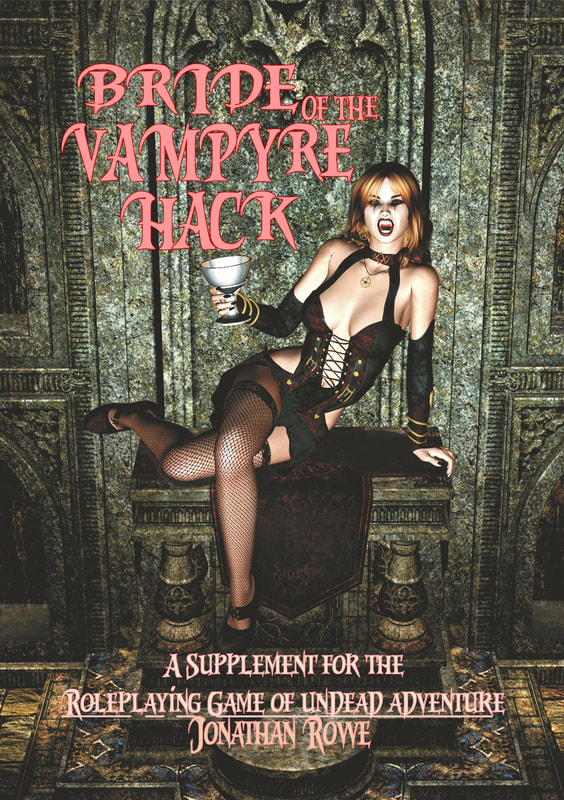
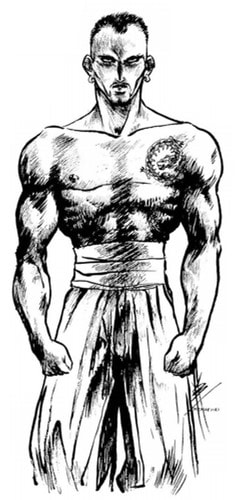
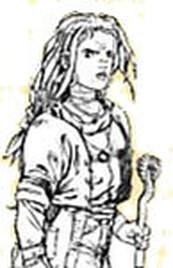

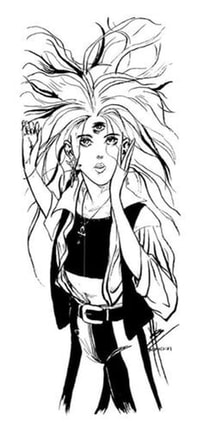
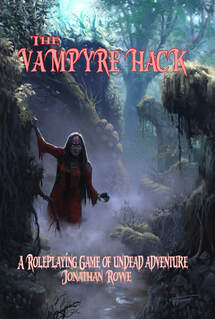
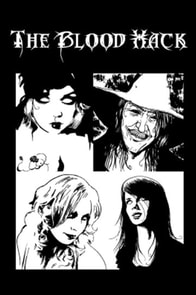
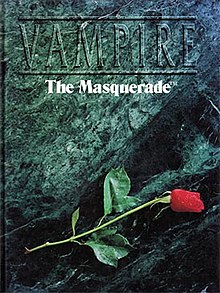
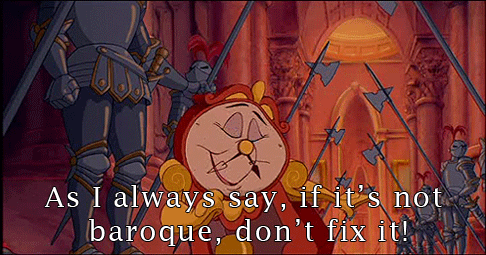
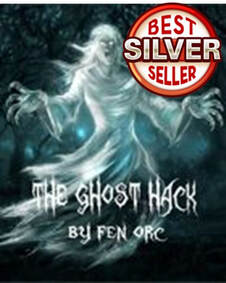
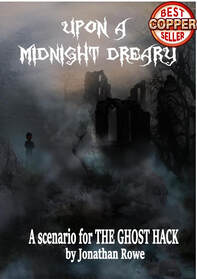

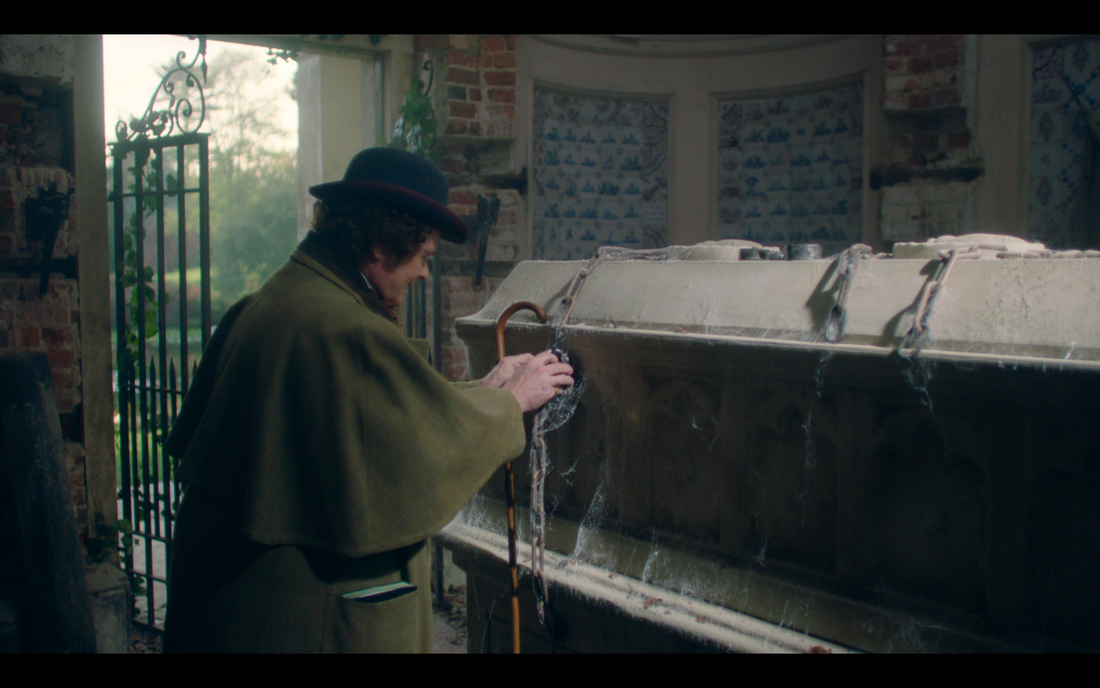
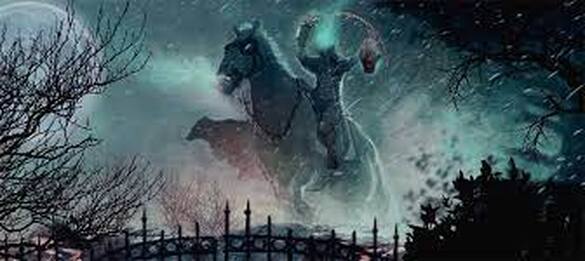
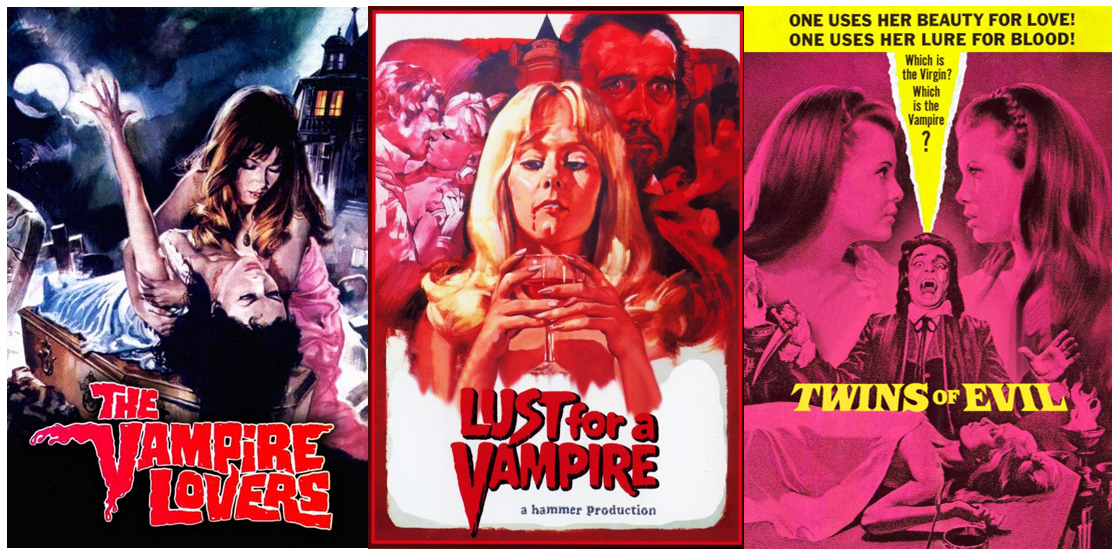
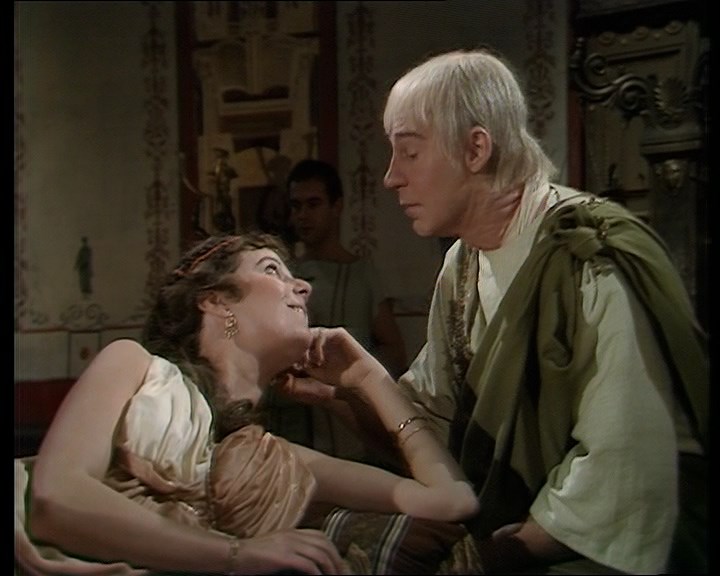
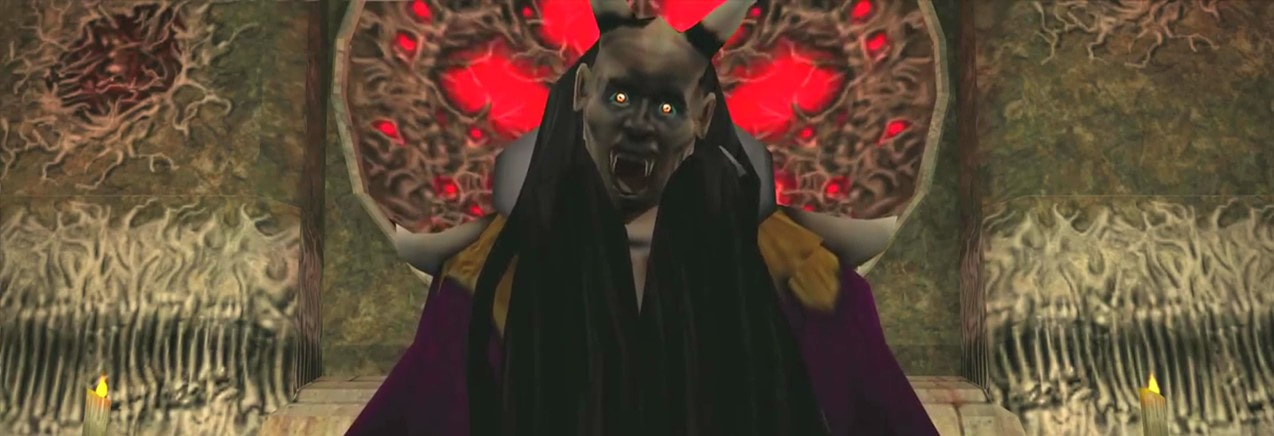

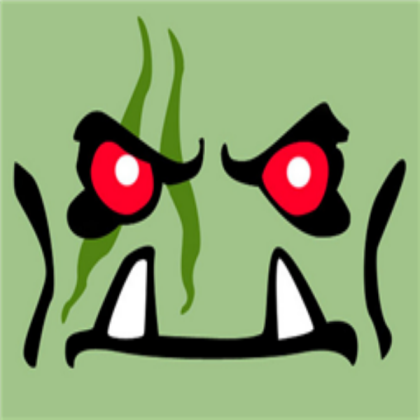
 RSS Feed
RSS Feed
